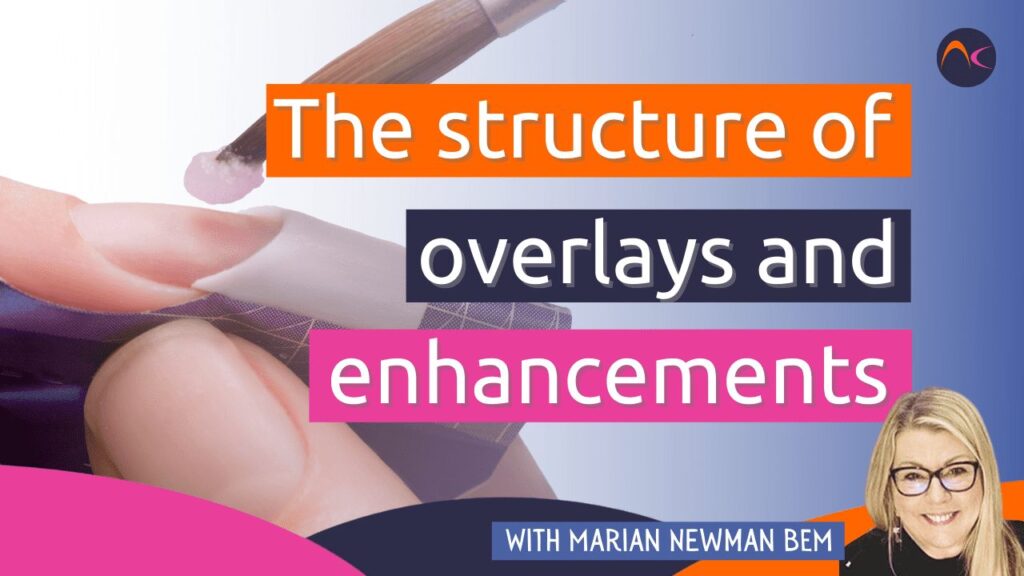Once upon a time, learning about the structure of overlays and enhancements was at the centre of beginner education. Nowadays, it doesn’t seem to feature as much and hardly ever for UV gel polish users. Plus, there are so many different shapes of enhancements that many favour it is often down to the appearance of the shape rather than understanding the strongest structure.
Es hora de una pequeña revisión.
An arch is very strong structure as any weight or forces put on it are mostly evenly spread all across it. The natural nail has two arches:
- From the base to the free edge: the upper arch
- From the one side wall to the other: the ‘C’ curve
Obviamente, cada persona tiene una configuración diferente de estos arcos. Creo que todos estaremos de acuerdo en que las uñas naturales más bonitas son esbeltas y con curvas suaves. También suelen ser las más fuertes. Las uñas con formas más planas tienen más tendencia a romperse.
The highest point of both these arches is usually in the centre of the nail and just behind the hyponychium. This is called the apex or stress area and is what gives the nail the best strength to withstand bending and breaking.
When creating a natural looking enhancement this is where the most product needs to be to provide the strongest structure. Careful shaping will disguise the thicker area as the overlay will be thinned down at the base and free edge and along the side walls, thus creating a gentle ‘upper arch’ and strong ‘C’ curve.
Sin embargo, para formas de clavo más largas y extremas, el vértice fuerte debe estar más atrás, hacia la base. Esto actúa como una especie de ancla que soportará las presiones ejercidas sobre el borde libre largo. Pero, incluso con el ápice ligeramente desplazado, el ápice natural de la uña (como se ha descrito anteriormente) sigue necesitando algo de ayuda para evitar que la uña se parta.
With a carefully constructed enhancement this is achieved by creating a ‘back bone’ down the length of the nail. Again, this is disguised by accurate shaping. Some extreme shapes need a straighter ‘upper arch’ if any arch at all! But the strength still needs to be there. This is why an understanding of the arches, the apex, and accurate product placement is important for the different shapes.
There has been a popular shape that is a short ‘stiletto’ where the free edge is a point. For this design, the apex is usually placed close to the base of the nail. It doesn’t need to be there to support the length but, if it was placed over the ‘stress area’ it would create an ‘upper arch’ that, together with the point, would look more like a claw! This shape does, however, grow out quickly and leaves thick apex in an unattractive place.
On a more natural looking enhancement, the growth of the natural nail will have the apex over the free edge and unbalance the structure which can result in breakages. This is where the term ‘rebalance’ comes from when maintaining the enhancements. The original apex needs thinning down and replaced back to where it should be to balance the nail again.
‘Builder’ type UV gels that have become very popular in many UV gel polish systems are used to strengthen the nail by ‘building’ a stronger structure. But structuring the overlay is not often taught to those just using a UV gel polish. It should be noted here that the new National Occupational Standard for UV gel polish now includes ‘builder’ products and their correct application and structuring.
Para concluir, un pequeño repaso sobre la estructuración de una superposición o mejora para los cualificados en este servicio y quizás alguna información nueva para los que sólo se han cualificado en esmalte en gel UV.


